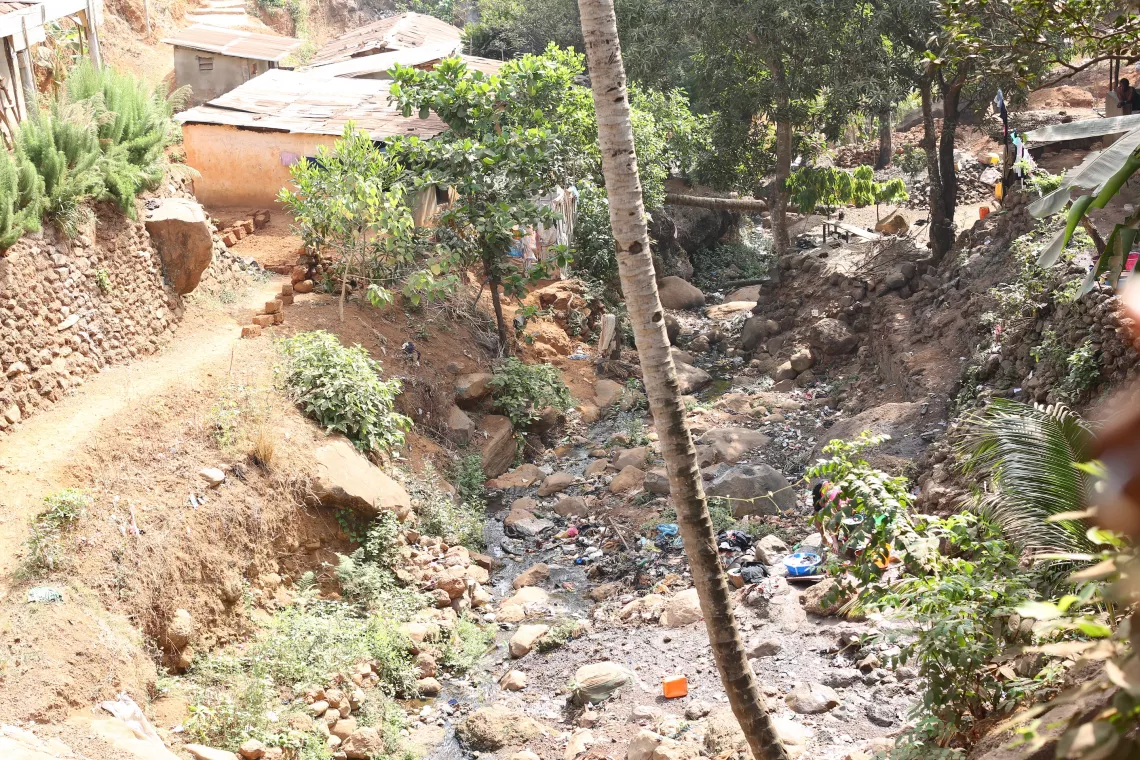Written By: Faith Jemosop
Sierra Leone is grappling with one of the harshest climate realities on the African continent. Despite contributing less than 0.03% to global greenhouse gas emissions, the West African nation is experiencing devastating floods, landslides, crop failures, and rising coastal erosion.
What makes this situation even more alarming is that these changes are not just random weather patterns, they’re the result of complex, layered causes that make Sierra Leone one of the world’s most climate-vulnerable countries.
From global emissions and shifting weather patterns to domestic deforestation and poor infrastructure, the roots of Sierra Leone’s climate crisis are both external and internal. Understanding these causes is critical to developing effective, lasting solutions.
Global Emissions
At the core of Sierra Leone’s climate crisis lies a global injustice: the vast majority of climate-altering emissions come from industrialized nations in the Global North. The burning of fossil fuels for energy, transportation, and manufacturing has pumped carbon dioxide, methane, and other greenhouse gases into the atmosphere trapping heat and destabilizing weather systems.
While countries like the U.S., China, and members of the EU account for the bulk of historical and present-day emissions, nations like Sierra Leone are suffering the consequences. Rising global temperatures have altered rainfall patterns, increased the frequency of extreme weather events, and raised sea levels all of which directly impact the country’s environment, economy, and public health.
Unpredictable Rainfall and Intense Heat Are Breaking Climate Norms
Climate models show that West Africa is particularly susceptible to disruptions in the monsoon system. Sierra Leone, which typically experiences heavy rainfall between May and October, is now witnessing erratic rain patterns. Torrential downpours often arrive suddenly, overwhelming drainage systems and triggering floods and landslides. Conversely, dry spells last longer and are more intense, disrupting planting and harvest seasons.
Alongside unpredictable rainfall, rising temperatures are heating the soil, drying rivers, and increasing evaporation rates. These changes don’t just affect comfort, they have deep implications for agriculture, food security, and water availability. For rural communities reliant on subsistence farming, climate unpredictability translates to hunger and income loss.
Deforestation: A Man-Made Accelerant of Climate Disasters
Internally, one of the most significant contributors to Sierra Leone’s climate vulnerability is deforestation. Massive swathes of forest have been cleared for charcoal production, farming, construction, and illegal logging. The consequences are stark:
- Soil erosion and landslides: Without tree roots to hold the soil in place, even moderate rains can trigger deadly landslides, as tragically seen in the 2017 Regent disaster.
- Loss of natural water regulators: Forests absorb rainwater and release it slowly, reducing flood risk and maintaining groundwater levels.
- Carbon release: Trees store carbon dioxide. Cutting them down releases this carbon into the atmosphere, adding to global warming.
According to Global Forest Watch, Sierra Leone lost over 1.3 million hectares of tree cover between 2001 and 2022, an alarming rate for a country with such limited forest resources.
Unplanned Urbanization Is a Ticking Time Bomb
Freetown, the capital, has seen rapid population growth, driven by rural-to-urban migration and post-conflict rebuilding. Unfortunately, this growth has outpaced infrastructure development. Informal settlements have sprung up on steep hills and in flood-prone valleys, often without proper drainage, sanitation, or land planning.
These urban environments are highly vulnerable to climate hazards:
- Flooding becomes routine, even with moderate rain.
- Waste management failures clog drains, exacerbating flood severity.
- Landslides are more frequent due to construction on deforested slopes.
Also read: How Climate Change Is Devastating Sierra Leone
Without serious investment in urban planning and resilient infrastructure, Freetown and other growing cities will continue to face deadly climate consequences.
Agricultural Fragility
Agriculture employs more than 60% of Sierra Leoneans, but most farmers depend on rain-fed farming and traditional techniques. With unpredictable rainfall and prolonged droughts, crops are failing more often, and yields are shrinking. Climate-sensitive crops like rice, cassava, and maize are struggling to grow in the new conditions.
The effects ripple through the entire country:
- Food prices rise due to lower supply.
- Malnutrition increases, especially in children and pregnant women.
- Rural poverty deepens, leading to more migration to already overburdened cities.
Few farmers have access to irrigation, climate-smart seeds, or training in sustainable practices, leaving them dangerously exposed to the elements.
Sea Level Rise and Coastal Erosion Are Swallowing Communities
Sierra Leone’s long Atlantic coastline is eroding at an alarming rate. Rising sea levels driven by melting polar ice caps and warming oceans are pushing saltwater into freshwater systems, destroying ecosystems, and displacing coastal communities.
Communities in areas like Lumley Beach, Goderich, and Shenge face:
- Loss of land and homes due to shoreline retreat.
- Declining fish stocks and harder-to-navigate fishing grounds.
- Saltwater intrusion, which contaminates farmland and freshwater wells.
Also read: How Agricultural Investment Transforms Drought-Prone Rural Zimbabwe
Coastal erosion also threatens vital infrastructure like roads, hospitals, and schools built near the water.
Infrastructure Deficits Amplify the Crisis
Sierra Leone’s weak infrastructure limits its ability to respond to climate threats. Drainage systems are outdated or non-existent in many areas. Rural roads wash out during heavy rains, cutting off access to markets, health centres, and schools. Electricity remains unreliable, especially in disaster-prone areas.
Early warning systems for floods and storms are still underdeveloped, meaning people often have no notice before disaster strikes. Emergency response teams, though improving, are underfunded and undertrained.
Without the physical systems to absorb climate shocks, even moderate disasters can become humanitarian crises.
Poverty and Inequality Compound the Problem
Climate change affects everyone but not equally. In Sierra Leone, poverty means many families live in poorly constructed homes, lack savings, and cannot afford to move away from danger zones.
Women and children, in particular, bear the brunt:
- Women are often responsible for gathering water and growing food, tasks made harder by climate stress.
- They are underrepresented in leadership, limiting their influence in climate policy decisions.
Displacement and insecurity increase the risk of gender-based violence during and after disasters.






